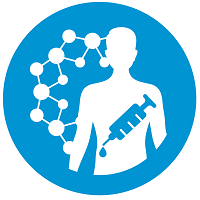Preclinical, Clinical, and Translational Sciences
Rapid Fires: Novel In Silico and In Vitro Approaches in Drug Development 1
Cellular Mechanisms Underlying Species-Related Differences in LNP-mRNA Delivery
Monday, November 10, 2025
3:15 PM - 3:30 PM CT
Location: 225 AB

Kari Martyniak, PhD (she/her/hers)
Postdoctoral Fellow
Pfizer, Inc.
Andover, Massachusetts
Rapid Fire Speaker(s)
Pharmacological evaluation of lipid nanoparticle-mRNA (LNP-mRNA) therapeutics relies on time- and resource-intensive in vivo studies, yet little is known about how well mechanisms of LNP mediated mRNA delivery are conserved across preclinical species and humans. Importantly, it remains unclear if outcomes in preclinical models provide a reliable basis for the projection of potency and dose-response of LNP-mRNA therapies in patients. In our work, conducted with primary hepatocytes from rodent, non-human primate and human livers, we obtained new evidence that cell-intrinsic mechanisms govern species differences in LNP cell association and intracellular uptake, playing a critical role in efficient mRNA delivery. Based on our findings, we submit that in vitro investigations using physiologically relevant cellular systems can generate key information for the design of efficacious LNP therapies and fill a critical gap in the preclinical to clinical translation.
Learning Objectives:
- Understand the functionality of physiologically relevant in vitro systems, such as primary hepatocytes from preclinical and clinical species, for improving confidence in clinical translation of LNP-mRNA therapeutics.
- Recognize the utility of flow- and imaging-flow cytometry, plate-based activity assays and RNA quantification, for determining critical steps governing LNP interactions with target cells.
- Appreciate the importance of species dependent differences when interpreting assay results and identifying potential caveats for preclinical to clinical translation.


